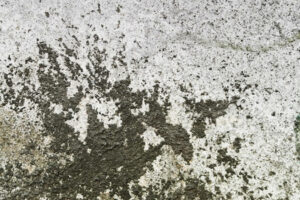Dangers of Black Mold
Have you seen news reports about collapsing houses, buildings with black mold, and school kids getting ill because of a toxic fungal growth that has overtaken their buildings? If you have, then you know how serious the dangers of black mold infestation can be. There are more than 100 types of black mold that can grow inside your home or office. This article is going to focus on the dangers of the most dangerous type: Stachybotrys chartarum, more commonly known as toxic black mold.
What is Black Mold?
 It is a fungus that grows in damp and humid areas. It can be found in water-damaged walls, behind wallpaper, on windowsills, under carpets and tiles, or in any other moist area. It can also grow on almost any surface, including wood, drywall, and concrete.
It is a fungus that grows in damp and humid areas. It can be found in water-damaged walls, behind wallpaper, on windowsills, under carpets and tiles, or in any other moist area. It can also grow on almost any surface, including wood, drywall, and concrete.
Mold spores are small, microscopic structures that float through the air when disturbed. When you breathe them in, they may cause allergic reactions such as wheezing or sneezing or even asthma attacks in some people. So, it’s important to protect yourself from inhaling mold spores if you are cleaning up an area where there is black mold present in your home.
Symptoms and Health Effects
This kind of mold can be a dangerous health threat. Spores are microscopic and float in the air, making it easy to breathe them in with every breath you take. When you inhale these spores, they make their way into your body and can cause adverse health effects if not treated properly.
Symptoms of exposure include:
- Headaches
- Nausea or vomiting
- Coughing or wheezing
If you suspect that your home has been affected by black mold, contact a professional cleaning service as soon as possible to have them inspect your home for signs of contamination. If any signs of black mold are found, follow their recommendations on how best to get rid of this harmful substance!
1. Chronic Coughing and Sneezing,
Black mold is a common cause of chronic cough and sneezing as well as asthma, which is an ongoing respiratory problem that affects your airways. If you have allergies or asthma, exposure to mold can trigger symptoms such as shortness of breath, wheezing, and difficulty breathing. Exposure could also cause eye irritation if it gets into your eyes or on things like contact lenses.
2. Chronic Fatigue
Chronic fatigue can be a common symptom of exposure, as well as other conditions. If you’re experiencing chronic fatigue on a regular basis, it’s important to act.
Mayo Clinic has defined Chronic fatigue as a “persistent feeling of tiredness that lasts for months or longer” and can affect your ability to work and participate in everyday activities. Symptoms include difficulty concentrating, sleeping well, or often feeling like you have no energy. Chronic fatigue can also make you feel nauseous or depressed—or even cause heart palpitations and muscle pain.
Although there are many possible causes of chronic fatigue (including depression), black mold exposure is one because that should be considered if your symptoms match those listed above.
3. Persistent Headaches
Headaches are a common symptom of black mold exposure and can be caused by a number of different factors. Black mold headaches typically begin as dull pains in the head or neck, which can become more severe as you move around. You may also experience:
- Headache pain that worsens with movement (such as walking)
- Pain that feels stronger in one part of your head than another
4. Irritation to the Eyes
Eye irritation is a common symptom of mold exposure and can be caused by the release of mold spores into the air. Mold spores are very small and can be inhaled, causing allergic reactions. Symptoms include conjunctivitis (also known as pink eye), redness, itching, and burning. Should you experience any of these symptoms after being exposed to mold in your home or work environment, it is highly recommended that you seek medical help immediately.
Conclusion
If you suspect that you have black mold in your home, the first thing to do is to hire a professional to test for it. After that, get rid of it as soon as possible. While there are some DIY methods for dealing with black mold, we strongly recommend hiring a professional who knows what they are doing if you can’t afford one or don’t feel comfortable doing it yourself.

Recent Comments